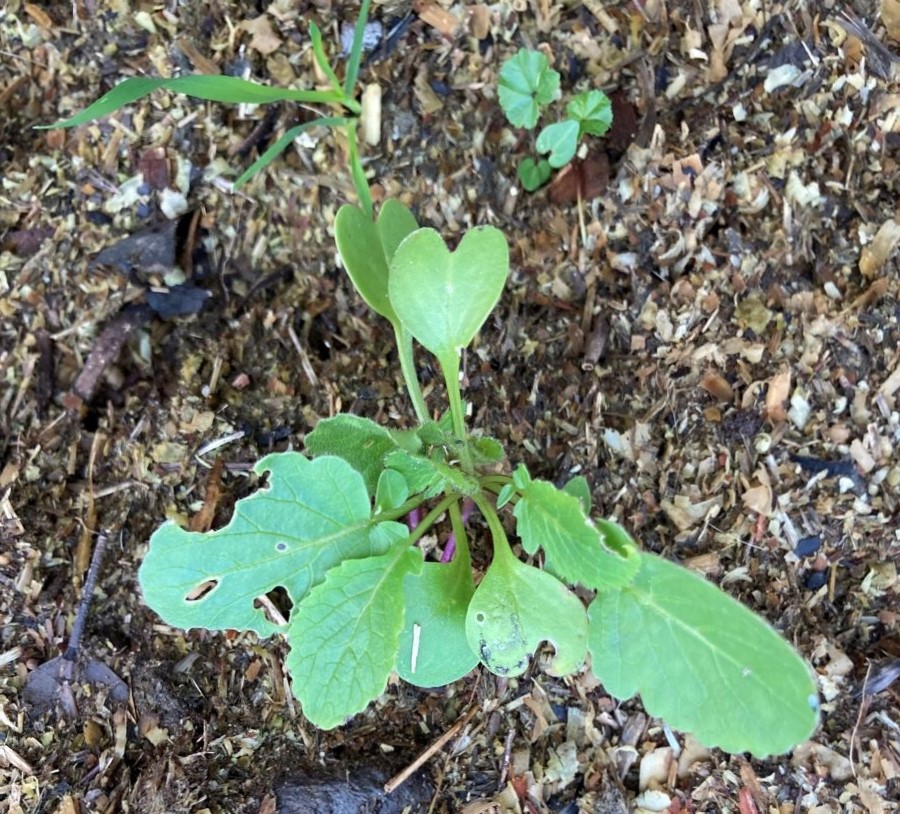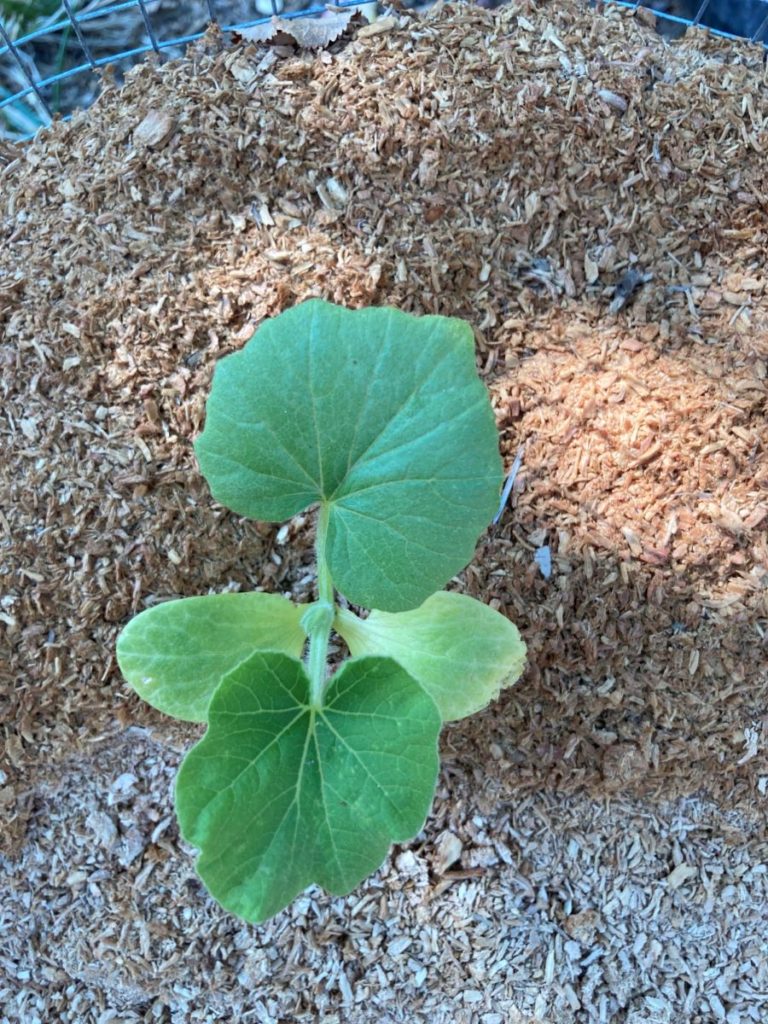
If you are a gardener of any level you have probably wondered if you can use compost as potting soil or garden soil. Possibly because you have some lying around. Maybe being a bit lazy and not wanting to mix the compost with anything else, or maybe just curious if it can be done. Or maybe you don’t have any compost but still wonder if planting in compost is possible.
Fully mature compost can be used in ratios of up to 100% in growing media for plants. The success of plants grown in compost will depend on a number of factors including but not limited to the materials used in the manufacture of the compost, the composting process, the length of time the plants grow in the compost, and if any nutrients are added during the growing season.
Lets take a look at some of the factors that affect how well a plant may or may not grow in pure compost based growing media.
Growing plants in compost, how much can be used?
Compost is not all the same, I think this needs to be stated at the very beginning so nobody gets the wrong idea. There are many types of compost, made from any number of materials and processes. So if you want to use purely compost to grow your plants you must know about the compost you are using. The plants you will be growing are also an important factor to consider and knowing what type of soil or growing medium those plants prefer.
Plants can be grown in a purely compost based growing medium if the right type of compost is used, and the plants grown in the compost are tolerant to those conditions. It is usually advisable that the compost should not exceed 50% in growing media.
According to the paper “Compost as growing medium: Chemical, physical and biological aspects” a compost rate of 20-50% showed a positive effect on plant growth, and a decreased need for fertilizer in early stages of growth.
A similar recommended rate is found in another paper “Composts in growing media: What’s new and what’s next?“, the typical rate of compost used in a growing medium is between 10-50%. This allows for the benefits of the compost to be obtained without the negative impact of higher rates in the growing media.
This paper did show that some plants such as strawberries, bedding plants, and tomatoes can be grown in 100% compost. The compost was different for each plant and the way they were grown was different. I listed the plants grown in pure compost and the compost material below.
| Compost Material | Crop | Growing Environment | Percent Compost |
|---|---|---|---|
| Yard Waste | Strawberry | Socks | 100 |
| Biosolids + Yard Waste | Bedding Plants | Pots | 100 |
| Orange Peel + Cow Manure | Tomato | Containers | 100 |
| Winery Waste | Tomato | Containers | 100 |
Is compost the same as soil?
Compost is not soil, but soil may have some materials in it that are virtually the same as compost. If you think about all the decaying matter on a forest floor is basically the same as a compost pile, just spread out. All those worms, orthopods, mycelium (mushrooms) eating all the dead or dying material and turning it into plant food that then mixes with the soil, its great!
This cycle just continues and piles on top of previous layers mixing with the soil and making a richer soil for things to grow in. It doesn’t just happen in the forest though, that is just an example. Most people know of some forest they have seen or been to, and know that there is all kinds of stuff on the ground. So it is an easy thing to imagine.
The matter on the ground decomposing won’t be the same as a hot compost, but would be closer to a vermicompost material. Vermicompost is compost made from worms eating the compost material and then pooping it out.
In general, compost is an organic material that has undergone considerable decomposition, with an end product that does not resemble the original material. This can be achieved through various means but some of the most common methods are hot composting (aerobic/thermophilic), cold composting (anerobic), and vermicomposting or worm composting.
In other words, compost is material like yard waste (such as leaves and grass, or wood chips or sawdust) that sit in a pile. This pile may or may not be turned or mixed periodically, and over time it will break down into a dark matter resembling a very dark soil. This material is rich in nutrients that plants need to grow. It can also have beneficial microorganisms that help prevent disease in plants, or help with nutrient uptake.
Now if you took a pile of soil from the earth, you know, just scoop up some dirt from your yard or something like that, put it in a pile, and then let it sit for a long time, not much would happen. Even after years you would still have essentially the same pile of soil. I am not talking about commercially available soils in bags. These commercially available garden soils are heavily amended with organic materials that over time will break down.
Of course that pile of soil you scooped up wouldn’t break down into compost, it didn’t turn into compost while it was in the ground. If you take a bunch of yard waste or trimmings and put them in a pile, and let it compost, it most certainly will change over time, and will work its way into the soil in one way or another.
Are there benefits of compost, is it worth it?
Did you know that using compost in place of something like peat moss can save the planet? Well maybe not but it can certainly minimize your impact on the environment in your gardening adventures. Compost and or coconut coir used in place of peat moss in soil or growing media can help offset the use of peat in growing plants. This can help in the reduction of peat bog mining, which could be a whole other article, so I will not get into the specifics of peat bog mining here.
To simplify, peat bogs hold a lot of carbon in them which can help lower the carbon dioxide in the air. Mining the peat bogs and using the peat can release the carbon that is stored there back into the atmosphere. So basically more greenhouse gases in the atmosphere.
Compost, unlike coir and peat can be available anywhere. Both peat and coir need to be shipped from the location where they originated unless they are being used in that area. Compost on the other hand can be made anywhere from local materials, so it can always be a local material if it needs to be. This can help reduce the environmental impacts of shipping, not to mention it has the potential to be cheap or free.
Compost can also help kill harmful bacteria, and other microorganisms, as well as promote beneficial ones. According to one of the papers listed earlier, compost can also help prevent diseases caused by certain pathogens.
Another good reason to use compost in a soil mix or by itself is that it will have a slow release of nutrients from the start. You can read more about compost as a fertilizer in another G.A. article here if you would like.
Issues growing in compost: Should you grow in 100% compost?

There can be issues growing in compost though, and this is why it is not usually used as the sole or primary ingredient in a planting media. General recommendations are less than 50%.
Compost used as the sole ingredient and/or the only nutrient source in a growing substrate may lead to phosphorous deficiencies. If no other nutrient inputs such as fertilizer are used during the duration of the crop being grown yields can be diminished.
The University of Massachusetts Amherst and the Agricultural Research Organization each reference other studies that have shown phosphorous deficiencies in plants where compost was the only source of fertilizer. This is because some of the phosphorous released during the composting process becomes quickly bound with other chemicals in the soil and takes a long time to become available again to plants.
Compost also has a lower water holding capacity and a higher bulk density than things such as peat moss. This lower water holding capacity can cause the plant being grown to require smaller and more frequent watering than a soil containing peat moss. These small watering sessions are needed because the compost does not hold much water so the amount of water will need to be smaller or water will be wasted as it flows out of the compost. A lower water holding capacity also means that it will dry out faster so more frequent watering is needed.
Compost vs potting soil. Is compost better than soil as a growing medium?
While compost is great it isn’t necessarily better than soil, but soil and compost do work very well together. Compost does not have a high water holding capacity, however the soil in my yard does. It contains large amounts of clay and because of this it can hold large amounts of water.
While clay soils can hold large amounts of water, it can be very heavy and it is hard for air to move through and get to the plant roots. Compost or other soil amendments that lighten the soil will allow more air to the roots and allow the roots to grow more freely.
So the question shouldn’t be which one is better, but what is the proper ratio of soil to compost. This will all depend on the soil you grow with, and the compost you have. Starting with the recommended amount of 20% – 50% compost in your soil would be a great start.
A little something interesting.
One more thing before we go, it didn’t really fit in this article, but I thought it was so cool I had to mention it. Plants that are exposed to mineralized organic matter (stuff in compost) are able to uptake amino acids as a nitrogen source. At this point I am not sure why this is but, a plant being able to uptake amino acids is really cool to me.
